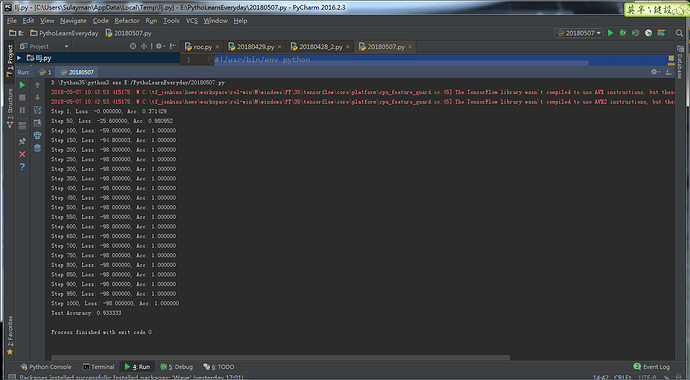#!/usr/bin/env python
# -*- coding: UTF-8 -*-
from __future__ import print_function
import numpy as np
from sklearn.model_selection import train_test_split
import tensorflow as tf
from tensorflow.contrib.tensor_forest.python import tensor_forest
from tensorflow.python.ops import resources
def load_data (file):
features = []
lables = []
file = open (file, 'r')
lines = file.readlines ()
for line in lines:
items = line.strip ().split (',')
list_to_string = ','.join (items)
for ch in ['Iris-setosa']:
if ch in list_to_string:
list_to_string = list_to_string.replace (ch, '0')
for ch in ['Iris-versicolor']:
if ch in list_to_string:
list_to_string = list_to_string.replace (ch, '1')
for ch in ['Iris-virginica']:
if ch in list_to_string:
list_to_string = list_to_string.replace (ch, '2')
items = list_to_string.strip ().split (',')
features.append ([float (items [i]) for i in range (len (items) - 1)])
lables.append (float (items [-1]))
return np.array (features), np.array (lables)
if __name__ == '__main__':
data, lables = load_data ('iris.csv')
train_data, test_data, train_lables, test_lables = train_test_split (data, lables, test_size=0.3, random_state=33)
# Parameters
num_steps = 1000
num_classes = 3
num_features = 4
num_trees = 10
max_nodes = 100
# Input and Target data
X = tf.placeholder (tf.float32, shape=[None, num_features])
# For random forest, labels must be integers (the class id)
Y = tf.placeholder (tf.int32, shape=[None])
# Random Forest Parameters
hparams = tensor_forest.ForestHParams (num_classes=num_classes,
num_features=num_features,
num_trees=num_trees,
max_nodes=max_nodes).fill ()
# Build the Random Forest
forest_graph = tensor_forest.RandomForestGraphs (hparams)
# Get training graph and loss
train_op = forest_graph.training_graph (X, Y)
loss_op = forest_graph.training_loss (X, Y)
# Measure the accuracy
infer_op = forest_graph.inference_graph (X)
correct_prediction = tf.equal (tf.argmax (infer_op, 1), tf.cast (Y, tf.int64))
accuracy_op = tf.reduce_mean (tf.cast (correct_prediction, tf.float32))
# Initialize the variables (i.e. assign their default value) and forest resources
init_vars = tf.group (tf.global_variables_initializer (),
resources.initialize_resources (resources.shared_resources ()))
# Start TensorFlow session
sess = tf.Session ()
# Run the initializer
sess.run (init_vars)
# Training
for i in range (1, num_steps + 1):
_, l = sess.run ([train_op, loss_op], feed_dict={X: train_data, Y: train_lables})
if i % 50 == 0 or i == 1:
acc = sess.run (accuracy_op, feed_dict={X: train_data, Y: train_lables})
print ('Step %i, Loss: %f, Acc: %f' % (i, l, acc))
# Test Model
print ("Test Accuracy:", sess.run (accuracy_op, feed_dict={X: test_data, Y: test_lables}))
提问人:M 丶 Sulayman,发表时间:2018-5-7 10:51:38

